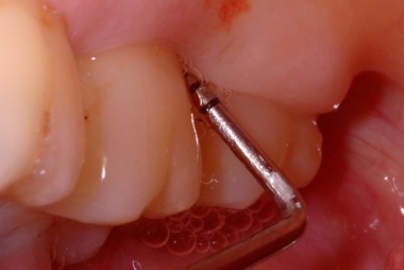Introduction

Diseases of the gums usually result from improper brushing, poor oral hygiene, inappropriate eating habits and abnormal occlusion of the teeth in the oral cavity. There are a number of different ways to diagnose and treat the diseases of the gums. There are basically two major gum disease namely gingivitis and periodontitis. Both of these are diseases which cause discomfort due to bleeding of gums, receding of the gums and eventually loosening of the teeth from their sockets thus resulting in teeth loss.
Step 1
The most prominent symptoms of diseases of the gums involve the red, swollen and very tender gums, with bleeding after almost every brushing routine. It also involves formation of pockets or channels between the teeth and the gums, due to which the teeth might shift to one side. There might be a difference in bite registration.
Step 2
These diseases of the gums may be a result of many other illnesses for example diabetics usually have gum diseases. Excessive consumption of alcohol, fizzy drinks and tobacco tend to make an individual more prone to gum diseases. Thus in order to treat these diseases effectively and efficiently it is very important to diagnose them thoroughly first. There are a number of ways in which gum diseases can be diagnosed.
Step 3
One of the most popular ways for the diagnosis of diseases of the gum involves the usage of x rays. An image of generally the whole oral cavity or just individual teeth is done to be examined properly. In this, the roots of the teeth, their adaptability to the gums and the bone of the jaw are usually examined. Furthermore the x rays also give the dentist a clear idea of the overall state of the mouth and thus help him in taking the right steps for a successful treatment.
Step 4
Another way used most commonly for the diagnosis of diseases of the gums is the examination of the oral cavity by a dentist. The dentist checks the oral cavity for bleeding and receding gums. Swelling in the oral cavity and especially that near the gums is taken into serious consideration by the dentist as this is one of the major and most prominent symptoms of gum diseases. Other than this, the dentist also checks the firmness of the teeth along with which plaque deposition is also taken into notice.
Step 5
Diseases of the gums can also be diagnosed with the help of examining the pockets. Pockets are basically areas between the gum and the tooth. A probe is used to determine the severity of the gum disease. This is done when the probe is inserted into the pocket to check its width. In a healthy gum, the pocket size is less than 3 mm. Anything greater than that indicate signs of disease.
Tips

Diseases of the gums can be controlled before they lead to loss of teeth, thus it is very important to diagnose the route problem timely so that loss of teeth can be avoided. These gum diseases can be avoided if a person has a proper diet with a less amount of sugary food, reduction in smoking and drinking of alcohol. In short, precautions and suitable measures should be taken to maintain a good oral hygiene.
Sources and Citations
http://seniorhealth.about.com/cs/oralconditions/a/gum_disease_2.htm
http://www.umm.edu/patiented/articles/what_will_confirm_diagnosis_of_periodontal_disease_000024_7.htm
Comments
Most Recent Articles
-
Ways To Find Gum Diseases Pictures
Gum disease is one of the common diseases. Gingivitis is most commonly caused as a result of plaque being left on or between the teeth. Over time, there is growth of bacteria and this will s...
-
What Are The Causes Of Gum Diseases
What causes diseases are usually bacterial, viral or several other kinds of infections. When talking particularly about gum diseases, the major cause is bacteria. These bacteria, which a...